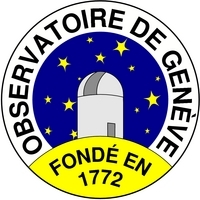
| INTEGRALPlanckGaiaPOLARCHEOPSEuclidATHENA |
| HEAVENSFACTCTALOFTSPICAJEM-EUSOXIPEeXTPTheseus |
| XRISMMAGBOUNDSMARTNet |
| ISDCCDCI |
| Data Centre for Astrophysics Astronomy Department of the University of Geneva |
| ISDC Seminar |
Aru Beri
University of Southampton
Pulse Profiles: A unique tool to probe into the accretion geometry of Accretion Powered X-ray pulsars
Abstract. In the case of high magnetic field neutron star binary systems (B ~ 1012 -1013 Gauss), the magnetic field plays an important role in channeling matter onto its surface. One important manifestation of the interaction between the neutron star accretion disc and its magnetic field is the accretion torque, which can result in transitions between spin-up and spin-down of the star. In this talk, I will discuss the process of accretion onto high B-field neutron stars: the accretion stream structure and formation, shape of the pulse profile and its changes with accretion torque. In particular, I will discuss the results from our recent study of a unique X-ray pulsar, 4U 1626-67. I will also present some results of Swift J0243.6+6124 obtained using 50,000 sec observation made by the Large Area X-ray Proportional Counter (LAXPC) onboard AstroSat. Swift J0243.6+6124 is a newly discovered X-ray pulsar, with a spin period of 9.85 sec. This source went into outburst in October 2017 and is of particular interest because it exhibited a super-Eddington X-ray luminosity (Lx∼5x1038 erg/sec, assuming a source distance of 4 kpc) within a month of outburst onset. In contrast to what is seen in other similar sources (like 4U 0115+63), a radio jet was also observed at peak Lx.







